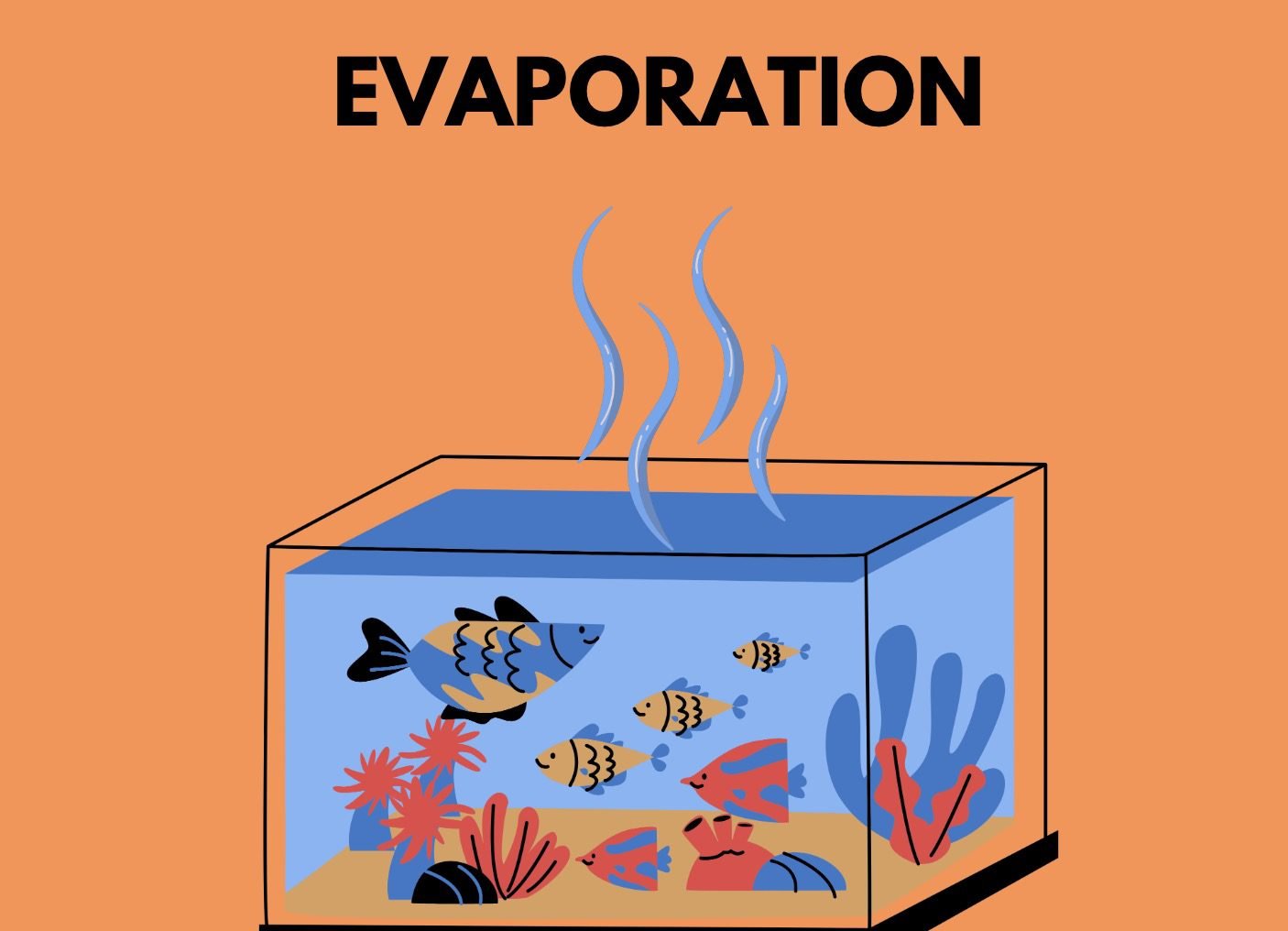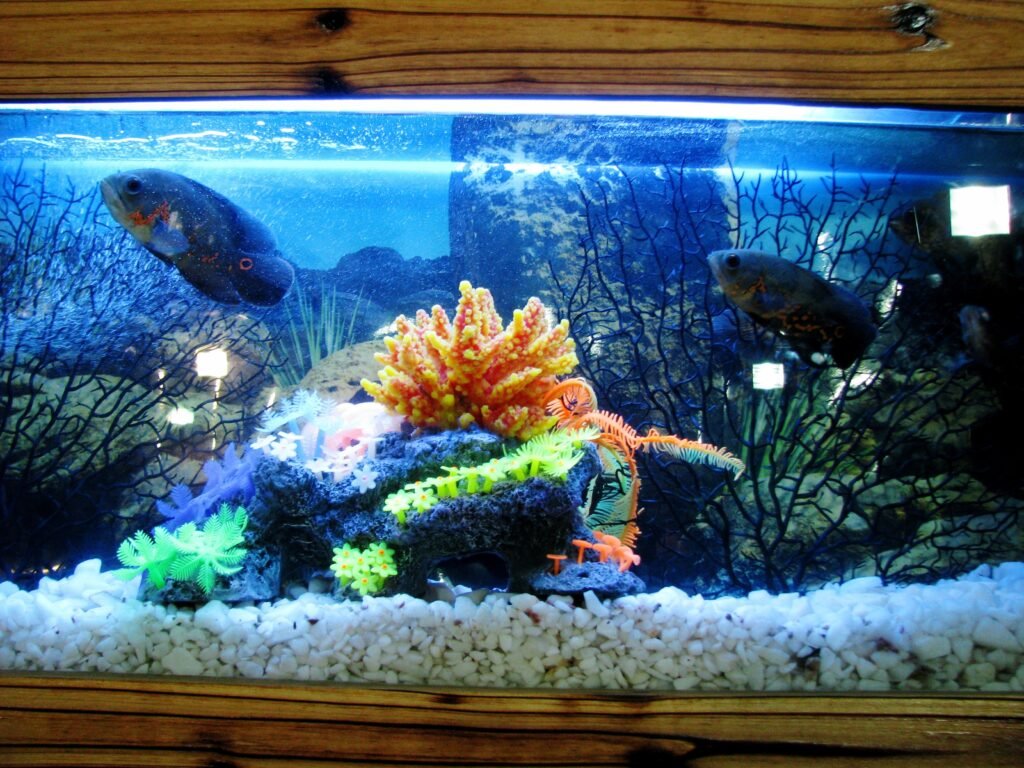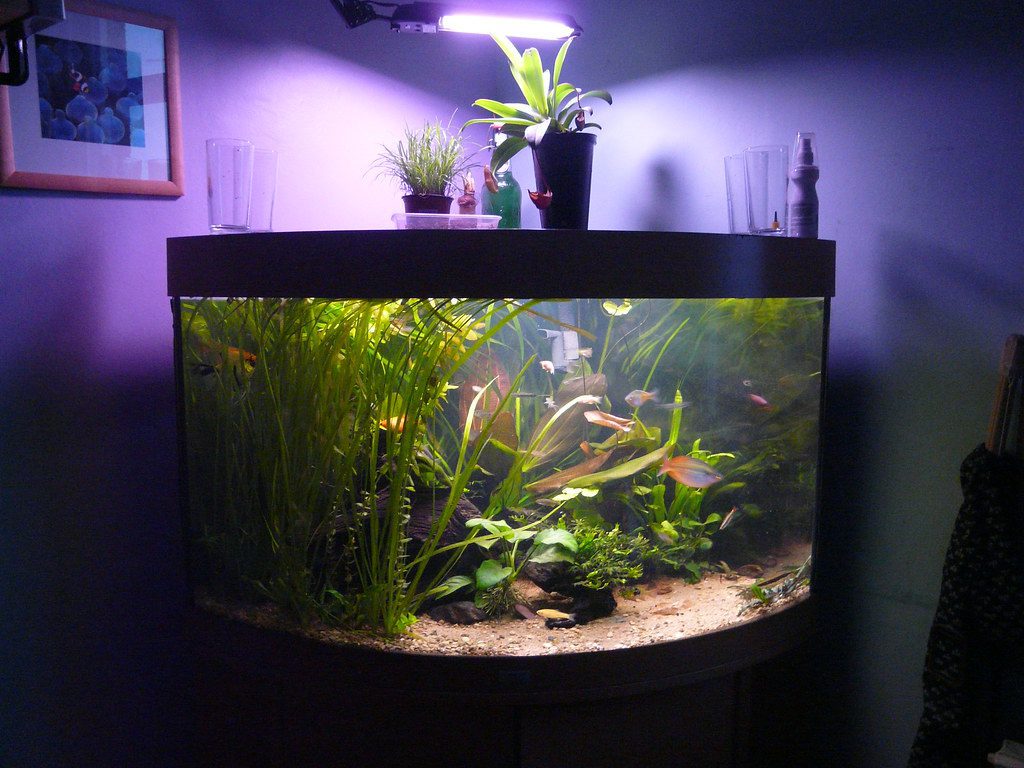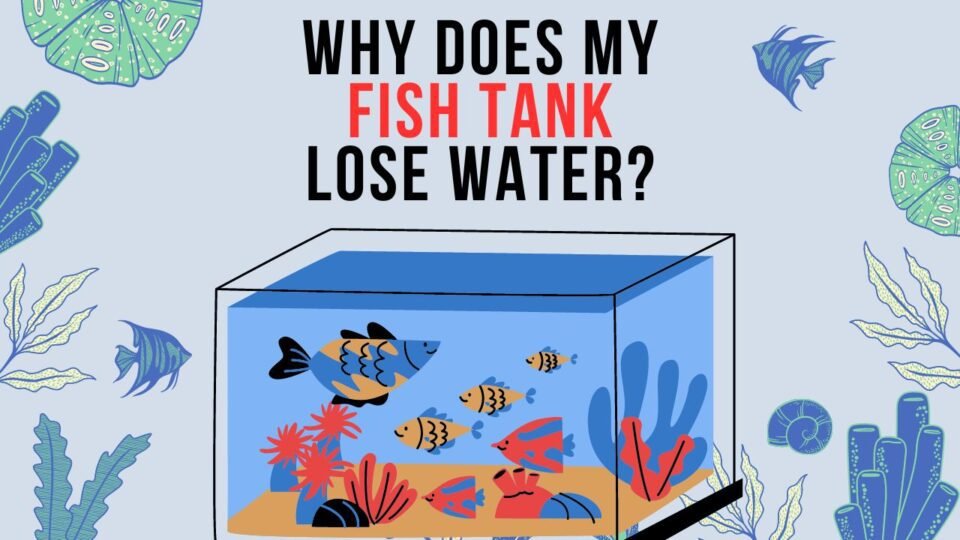


Why Do Birds Have Claws? The Real Reason Why!
September 7, 2023Whether you have your own mini underwater world at home or you run an aquarium, you might have wondered, ‘Why Does My Fish Tank Lose Water?’ On average, a fish tank can lose up to 10% of its water per week.
There can be various reasons why your fish tank loses water, ranging from natural factors to more concerning issues. Let’s dive in to explore the possible reasons and also provide practical solutions to address them.
Also, Read: Why Does My Fish Tank Smell? | How To Remove The Smell?
Increased Evaporation
One of the most common reasons for your fish tank losing water is Increased evaporation. It is an unavoidable natural process, but its rate can be controlled. Humidity levels in the room where the fish tank is located can also impact the rate of evaporation and water loss aswell. If high-heat lighting is installed in fish tanks or if the tank is placed close to a sunny window where the chances of air movements are likely to occur, you might find yourself face-to-face in the same situation.


Evaporation in Fish Tank
The size of the tank and the amount of surface area exposed to air can also impact water loss through evaporation. Generally, the larger the tank, the more water it holds, and the slower the rate of evaporation. This is because larger bodies of water have a greater volume of water to lose before the water level drops significantly.
Comparing Evaporation Rates
Understanding the impact of specific measures on evaporation rates can significantly help in maintaining the appropriate water level in your fish tank. Let’s take a closer look at how the adoption of certain strategies can control evaporation when compared to a situation where no measures are taken.
| Measure Taken | Evaporation Rate if Measures Taken |
| Covering the tank with a lid or a hood | Significantly reduced |
| Reducing room temperature | Reduced |
| Adding a humidifier in the room | Reduced |
| Installing fewer heat-generating lights | Moderately Reduced |
Remember, by implementing these measures, you can not only maintain a healthy environment for your fish but also save on water replenishment costs in the long run.
Water Movement
Your tank’s water movement is more likely to increase if there are more fish in the tank or if you have a water purifier installed. A water purifier can increase water movement by creating a pressure drop across the purifier’s membrane. This pressure drop forces water through the membrane, which can create a flow of water. Agitation on the surface of water can cause more water molecules to be exposed to air.


Water Movement in Aquarium
- One way to control water movement is by using a filter. Filters help to circulate water and remove debris and waste from the tank.
- Another way to control water movement is by using an air pump. Air pumps create bubbles in the water, which helps to oxygenate the water and create a gentle current.
Implementing these strategies can help reduce the rate of water loss due to movement, maintaining a healthier and more stable environment for your fish.
Unnoticed Leakages
If your fish tank is losing water under unexplainable circumstances, one possible reason could be a leaking tank. Leaks in the tank or equipment can cause water loss. Signs of a compromised fish tank can include visible cracks or chips in the glass or acrylic, as well as damaged edges or seals. These issues can lead to leaks, which can be detrimental to the health of your fish and the overall stability of your tank.


Water Leakage Aquarium
- By checking the seals and edges regularly, you can identify any issues early and take action to fix them before they become a bigger problem.
- To avoid leakage, the most important factor is to place the aquarium on a leveled surface. You might also want to check for any unnoticed cracks from time to time.
- Small cracks or chips can be repaired using aquarium-safe silicone sealant. However, it is important to note that this is only a temporary fix and may not be suitable for larger or more severe damage.
- When replacing a compromised tank, it is important to consider the size and needs of your fish. Choose a tank that is appropriate for the number and size of your fish, and make sure to properly cycle the tank before adding any aquatic pets.
Regular maintenance and inspections can help identify any potential issues before they become major problems. By taking these precautions, you can help ensure the longevity and safety of your fish tank.
Ammonia Stress
Ammonia is a toxic compound that can build up in fish tanks and harm aquatic life. One of the primary sources of ammonia in a fish tank is fish waste. Fish and other aquatic creatures can also contribute to water loss through respiration and waste production. They excrete ammonia as a byproduct of their metabolism, and this ammonia can get into the water if not properly removed.


Ammonia Formula
The elevated levels of ammonia lead to trapped air bubbles which make it difficult for the fish to breathe. Ammonia wastes depend upon the number of fish as well as the species of fish. Some fish are more likely to release wastes with higher concentrations of ammonia while some are not.
- There are several ways to test for ammonia levels, including using test strips or liquid test kits. To test for ammonia levels using a liquid test kit, you will need to fill a test tube with water from your fish tank and add a few drops of the testing solution. The solution will change color based on the ammonia levels in your tank.
- Another way to monitor ammonia levels is to observe your fish. If they appear lethargic or are gasping for air at the surface of the water, it may be a sign of high ammonia levels.
- If you notice a strong odor coming from your tank, it could also be a sign of high ammonia levels.
Understanding the causes and effects of ammonia stress can help fishkeepers maintain a healthy and stable tank. Regular testing, proper cycling, and responsible stocking and feeding practices can all help prevent ammonia stress and reduce water loss in the tank.
Equipment Malfunction
Another reason for your fish tank losing water is the malfunctioning equipment. If equipment is not kept intact, it could play a significant role in lower water levels in fish tanks. If your filter or pump is too small for your tank, it may not be able to keep up with the water flow, leading to lower water levels.


Fishtank Equipment
- Make sure your equipment is appropriately sized for your tank to prevent any issues. Leaks in the filter, pump, or tubing can cause water to slowly drain out of the tank.
- Another common equipment malfunction that can lead to lower water levels is an improperly sealed aquarium lid. If the lid is not tightly secured, water can evaporate from the tank, causing the water level to drop.
- Overflowing tanks can also lead to lower water levels. If the overflow box or drain becomes clogged, water can overflow onto the floor instead of draining back into the tank. Regularly cleaning and maintaining the overflow system can prevent this issue.
It’s important to regularly inspect all equipment and replace any damaged or worn parts to prevent leaks.
Substrate Absorption
Adding gravel or sand to the bottom of the tank may look eye-pleasing but you would still have to watch out for a drop in water levels. Some substrates or specific types of gravel have the tendency to absorb water. This can lead to lower water levels over time.


Aquarium Gravel
- You can ensure the type of substrate you’re using doesn’t have water-absorbing capacity.
- To prevent debris build-up, it’s important to regularly clean the substrate. This involves using a gravel vacuum to remove any debris that has settled on the bottom of the tank.
- It’s also important to properly maintain your aquarium filter. The filter plays a vital role in removing debris and other contaminants from the water.
Choosing the right substrate type for your fish tank is key to water stability. Different substrates have varying water-absorbing tendencies. Let’s compare some common types:
| Type of Substrate | Water Absorbing Tendency |
| Gravel | Low |
| Sand | Medium |
| Coarse Stone | High |
By understanding these differences, you’re better equipped to choose the substrate type that will contribute the least to water loss in your tank.
The Consequences of Ignoring Water Loss
If you think that your fish tank losing water is just a minor problem you can ignore, think again. Overlooking water loss, especially when it’s substantial, can lead to several consequences that can negatively impact your tank and its inhabitants.


Equipment Malfunction
Unstable Water Parameters
Firstly, when water volume decreases, it becomes more challenging to maintain stable water parameters. This can lead to drastic swings in temperature, pH, and other vital parameters, causing stress to your aquatic pets.
Inadequate Filtration
Secondly, a reduction in water volume may mean that your filtration system isn’t working as effectively as it should. Inadequate filtration can lead to an accumulation of waste products and harmful substances that can compromise the health of its inhabitants.
Reduced Oxygen Levels
Lastly, lower water levels can also mean less oxygen for your fish. The surface area of your tank, where oxygen exchange takes place, decreases when the water level drops. As a result, the oxygen levels in your tank may fall, leaving your fish gasping for air.
Conclusion
Isn’t it true that you want nothing but the best for your aquatic friends? Having low water levels in your fish tank is not something you would want. Being proactive about their care is the first step towards ensuring their optimal health and longevity. Learning the reason behind your fish tank losing water is important, and dealing with these issues early on can ensure the happiness and health of your fish, even extending their lifespan.



